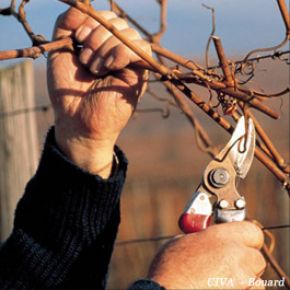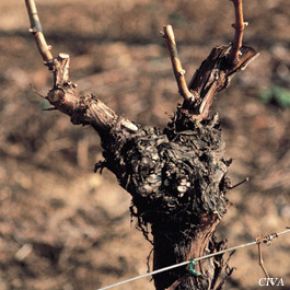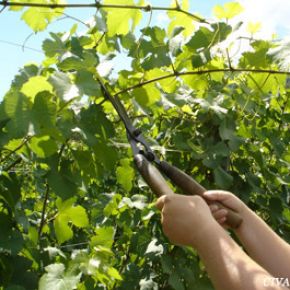Working on the wine
Our task is to adapt our work to the nature of each parcelle or plot of land, and to each situation in order to obtain the best out of each. We do not have one single way of working our vineyard but almost as many as there are plots of land. Adding to this the six varieties of vine that we work with and which all have differing agronomic requirements, one can understand the importance of a great deal of flexibility in relation to each parcelle.
Thus, regarding the working of the soil, the vines on the light, filtering soils are completely ploughed (in order to avoid any competition from weeds), traditional soils are grassed on one row and ploughed on the other and the richest and most humid soils are completely grassed. This is in order to compensate as far as possible for the very low rainfall in the Colmar region (one of the lowest in France with 500 mm per annum on average). For our parcelles on very steep slopes (which is approximately 25% of our vineyard), where work cannot thus be mechanised with a tractor, these are worked with a tracked vehicle once a year. This very precise management of the soils is intended to avoid any water stress on the vine, which would be so harmful to the purity, brightness and structure of the wines.
The phyto-sanitary protection of the vine essentially involves the use of sulphur, copper and products used in organic farming.
No chemical fertiliser is used in the running of the vineyard, only compost we make ourselves using raw materials derived from organic farming. Calcium and magnesian limestone is spread each year on the granitic soil terroirs to prevent acidification.
The pruning applied is either a single or double Guyot depending on the vigour of each vine stock. De-budding is carried out precisely and painstakingly in order to preserve precise number of grapes per stock. We attach great importance to the training of the vines in order to optimise the leaf surface for each stock (two to three manual passes each season).
Green harvesting is thus only used exceptionally and is limited to young vines although sometimes necessary and indispensable.
Harvesting dates are set in order to be able to pick very ripe grapes but avoiding any over-ripening, so as to obtain a precise expression of each terroir. Late harvests and selections of noble grapes are only sorted in the large terroirs.



